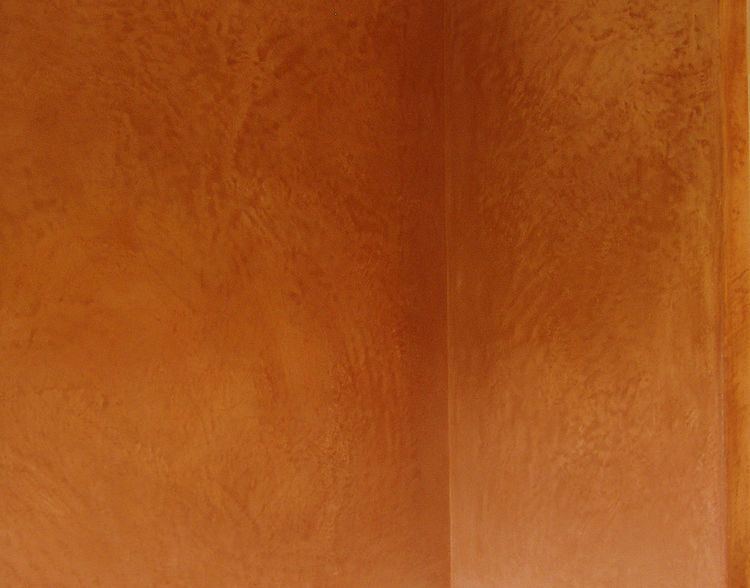 | ||
Tadelakt (tadla:kt) is a waterproof plaster surface used to make baths, sinks, water vessels, interior and exterior walls, ceilings, roofs, and even floors. It is made from lime plaster, which is rammed, polished, and treated with soap to make it waterproof and water-repellant. Tadelakt is labour-intensive to install, but durable. Since it is applied as a paste, tadelakt has a soft, undulating character, it can form curves, and it is seamless. Pigment can be added to give it any colour, but deep red is traditional. It may have a shiny or matte finish.
Contents
Etymology and history
"Tadelakt" means "to rub in", from the Moroccan Arabic (or Amazigh/Berber?) تدلاكت, referring to the rubbing with soap.
Tadelakt is thought to have evolved from qadad, a similar plaster treated with calcium hydroxide and oils and fats instead of soaps.
Constituents and chemistry
The basic constituents of tadelakt plaster are:
- lime plaster (not Portland cement)
- in some cases, marble or limestone sand (but not other aggregates)
- natural soap (often "black" or olive oil soap) to speed carbonation of the surface and impart water-resistance.
The soap chemically reacts with the lime plaster, forming lime (calcium) soaps. Calcium soaps are insoluble in water, and fairly hard. They are familiar, in areas with calcium-rich ("hard") water, as deposits in bathtubs, sinks, and showers; when soap is mixed with the water's dissolved calcium carbonate/lime, calcium soaps form.
2 C17H35COO−Na+ + Ca2+ → (C17H35COO)2Ca + 2 Na+Techniques
Traditional application includes polishing with a river stone and treatment with oleic acid, in the form of olive oil soap, to lend it its final appearance and water resistance.
In Morocco, the traditional application technique:
Long-term maintenance of tadelakt requires regularly re-sealing the surface with a soap solution; in the case of qadad rooves, this was traditionally done every few years.
Tadelakt can be elaborately carved into yeseria.
Uses
Tadelakt is the traditional coating of the palaces, hammams and bathrooms of the riads in Morocco. The restoration of the riads of Morocco had led to a resurgence in its use.
In modern times, it has been used outside.
